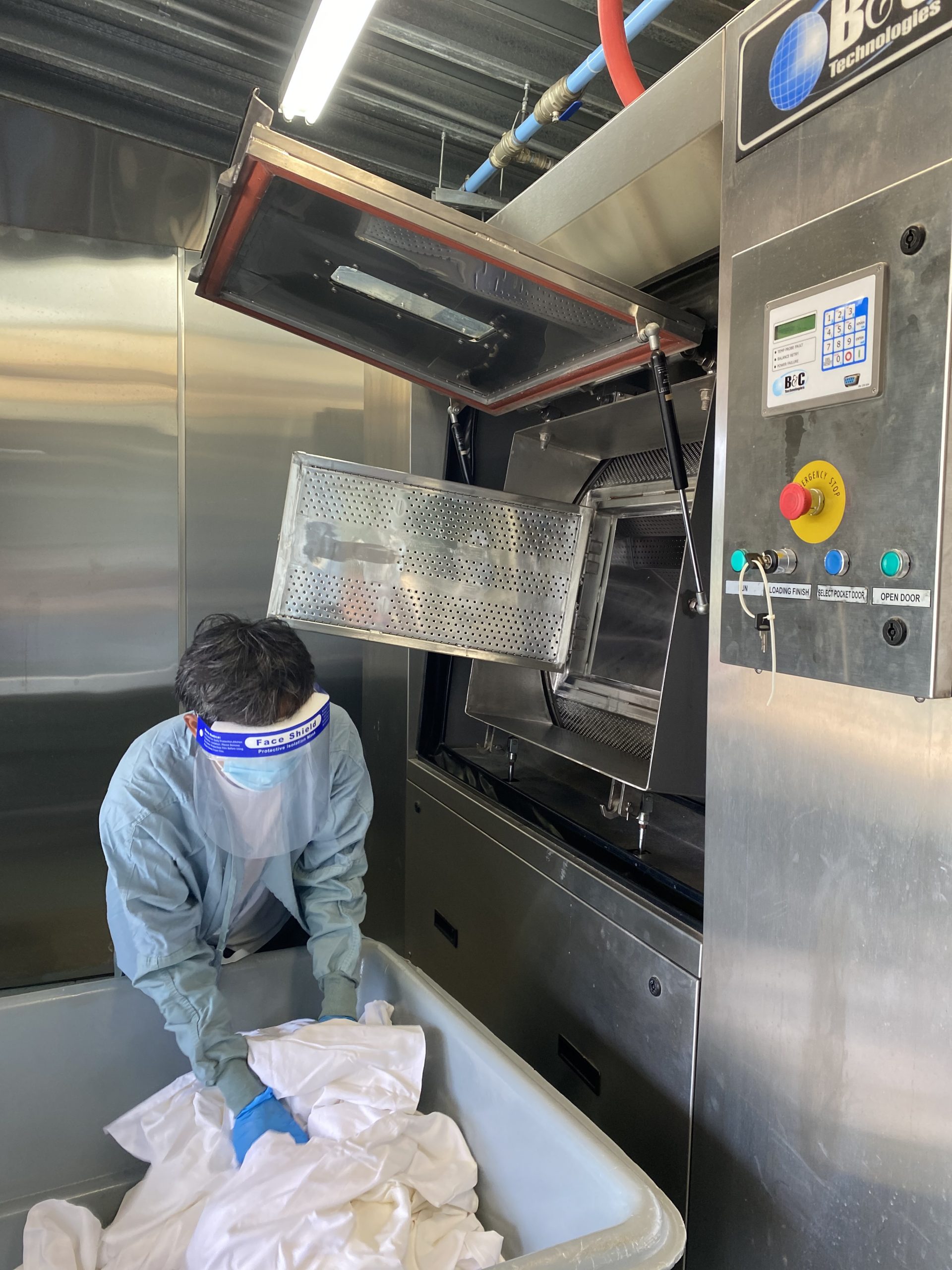Best Practices for Processing Healthcare Laundry

Best Practices for Processing Healthcare Laundry
Healthcare laundries deal with significant challenges that are quite different from standard laundry processing. Difficult stains, cross contamination issues, and special handling requirements generally land at the top of the pain points list in any healthcare laundry.
The initial step in any laundry should be sorting or grading of the goods. Without proper sorting of the goods into grades or type (light soil, medium soil, heavy soil, etc.) it will be difficult to get good repeatable results. If lightly soiled goods are subjected to a heavy wash formula, the extended mechanical action and the higher dosage of detergents and bleach will reduce the life expectancy of the textiles. Similarly, washing heavily soiled items with lightly soiled goods will simply ensure that these heavy soil items are washed over and over again, looping them through the wash process. This inefficient loop will wear the goods more quickly, remove them from normal service, and take up space in your wash process.
After the sorting issues are resolved, make sure that you have an adequate supply hot water in your laundry. A minimum wash temperature of 140F (60C) is a good start (check local codes for specific guidelines in your area). If you are using enzymes, make sure the wash temperature doesn’t exceed the chemical company’s recommendation.
Check the hardness of your water. High hardness will hinder the effectiveness of your chemicals. For more information on the effects of hard water and remedies thereof, read about using softened water in your commercial laundry.
Next, make sure that the linens are promptly washed. Stains, especially blood, will set over time and are much more difficult to remove without linen damage.
To reduce cross contamination, use different, marked laundry carts for clean and soiled laundry. Differentiate clean and soiled areas of the laundry so that clean goods are not stored or handled near the soiled area. Schedule cleaning of the laundry carts regularly, and decontaminate any surface that comes into contact with soiled laundry immediately.
Consider accreditation of your facility and put the gained knowledge and training to use in your facility. Accreditation can be an important feather in your cap as a healthcare laundry processing facility. You can read more about how healthcare accreditation benefits you on our blog.
Finally, work with your chemical representative to solve staining problems and don’t be afraid to push them to bring in an expert if results aren’t improving. Any reputable chemical company will have educated experts that are experienced in solving these problems.